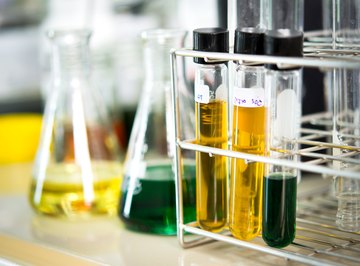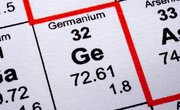
You've conquered the naming of compounds and now you're ready to move onto balancing chemical equations. But the process involves more numbers, and already coefficients seem harder than subscripts. Subscripts in a chemical formula are constant for each compound. Sodium phosphate is always Na3PO4. Methane is always CH4. Even compounds that can be expressed in multiple ways (acetic acid: CH3COOH or C2H3O2) always contain the same number of their respective elements. Not so for coefficients. Methane may appear in a chemical equation as 3CH4, 4CH4 or even 18CH4. How can this number change without changing the compound? And what causes it to change? Please note that all numbers following chemical symbols should be subscripts.
Identification
The coefficient in a chemical formula is the number immediately preceding the compound. It appears full size, never as a subscript or superscript.
Function
The coefficient in a chemical formula represents the amount of each chemical present. The amount of a substance is measured in moles.
Mole
The mole can be a tricky concept to master. The confusion usually surrounds the fact that it can be used to measure atoms, molecules or just about anything that involves an amount. Just remember that the mole measures the most basic unit of amount possible. If you're dealing with atoms of hydrogen, then a mole measures the amount of atoms present. If you're dealing with molecules of ethane (CH3CH3), then the molecule is the most basic unit, not the atom. A mole is 6.022x10^23 of the most basic unit. (A caret indicates superscript; 10^23 is 10 raised to the twenty-third power.) One mole of Hydrogen is 6.022x10^23 atoms of hydrogen. One mole of ethane is 6.022x10^23 molecules of ethane. A coefficient in a chemical formula indicates how many moles of that substance are present. 3CH4 means that 3 moles of CH4, and thus 1.8066x10^24 molecules of CH4, are present.
Balancing Equations
Coefficients are used in the process of balancing equations, known as stoichiometry. We add coefficients to compounds in chemical equations to assure that the number of moles of each element is the same on both sides of the equation. Examples: 3Na^(+) + PO4(3-) --> Na3PO4 3 moles Na, 1 mole PO4 --> 3 moles Na, 1 mole PO4 CH4 + 2O2 --> CO2 + 2H2O 1 mole C, 4 moles H, 4 moles O --> 1 mole C, 4 moles H, 4 moles O
Converting Moles to Grams
We also use coefficients when determining the amount of a chemical to use in the laboratory. We can't weigh moles on our scales, so we must convert moles to grams. For this conversion, we use each element's molar mass, found on the periodic table. If, from our stoichiometric calculations, we know we need 5 moles of ice (H2O), then we simply use dimensional analysis to figure out how many grams of ice to add to the reaction: 10 mol H (1.00794 g/mol H) + 5 mol O (15.9994 g/mol O) = 90.0764 g ice
References
About the Author
Allison Boley writes both fiction and nonfiction, having placed as a semifinalist in the international Scriptapalooza Semi-Annual Television Writing Competition. Boley graduated summa cum laude from the Barrett Honors College at Arizona State University, where she is concurrently pursuing her doctorate in physics.
